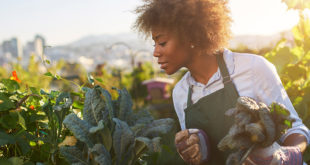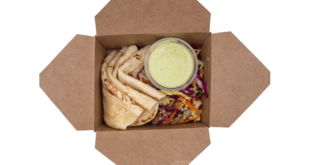![]() Being completely trash-free is a daunting task. Even a company in the business of “green” with highly educated Eco Patriots is challenged by this. Last week, Eco-Products reviewed our waste diversion results from 2009. We strive to divert 100% of our waste from landfills – everything is either composted or recycled.
Being completely trash-free is a daunting task. Even a company in the business of “green” with highly educated Eco Patriots is challenged by this. Last week, Eco-Products reviewed our waste diversion results from 2009. We strive to divert 100% of our waste from landfills – everything is either composted or recycled.
Last year, we diverted 7 tons of compost/recyclable materials from the landfill out of total of 10.95 tons of waste – that’s a 64% diversion rate. Honestly, it wasn’t as high as we had hoped. We think some of the factors that may have contributed to our lower than expected % were:
- Moving to a larger building in which people were more spread out and couldn’t closely monitor each other’s disposal habits
- More employees which makes waste management more difficult
- Battling with illegal midnight dumping of construction debris in our dumpsters
- Bringing more waste into the building from the outside
- Not doing as much continual reinforcement and education with employees as in prior years.
In a company meeting, we reaffirmed our commitment towards waste diversion and set a goal of achieving at least 80% in 2010. At the meeting, our CEO made a great comment about how he views our work environment. Since starting at the company 8 months ago, he has viewed the building as a campsite in which he tries to leave no trace. Whatever he packs in he packs out. What a great philosophy to make you think twice about the packaging you use/buy.
Here are some steps we are going to take to achieve our goal this year:
- Continue to only have trash bins in centralized locations, no bins in offices/cubes
- Make a more conscious effort to treat the building as a leave-no-trace zone. Pack-in-pack-out mentality.
- Monitor our diversion rate quarterly instead of annually.
- Search for solutions to products we currently don’t recycle or compost. For example, the wrapping on reams of paper can’t be recycled or composted due to their lining.
- Be more diligent about recycling hard to recycle items such as plastic bags and block styrofoam. Drop them off at a local hard-to-recycle facility.
- Install locks on our dumpsters.
- Educate, educate, educate. We are inviting in a representative from Eco-Cycle, a local recycler, who can answer our recycling questions.
- Tour a Material Recovery Facility (MRF) – a recycling center – to see first hand what is considered a contaminant. I’ll be doing this in the middle of March.
- Hang up more signage near our recycling/compost/trash bins
 Corner Booth Blog | TundraFMP Restaurant Supply, News & Equipment Blog
Corner Booth Blog | TundraFMP Restaurant Supply, News & Equipment Blog



